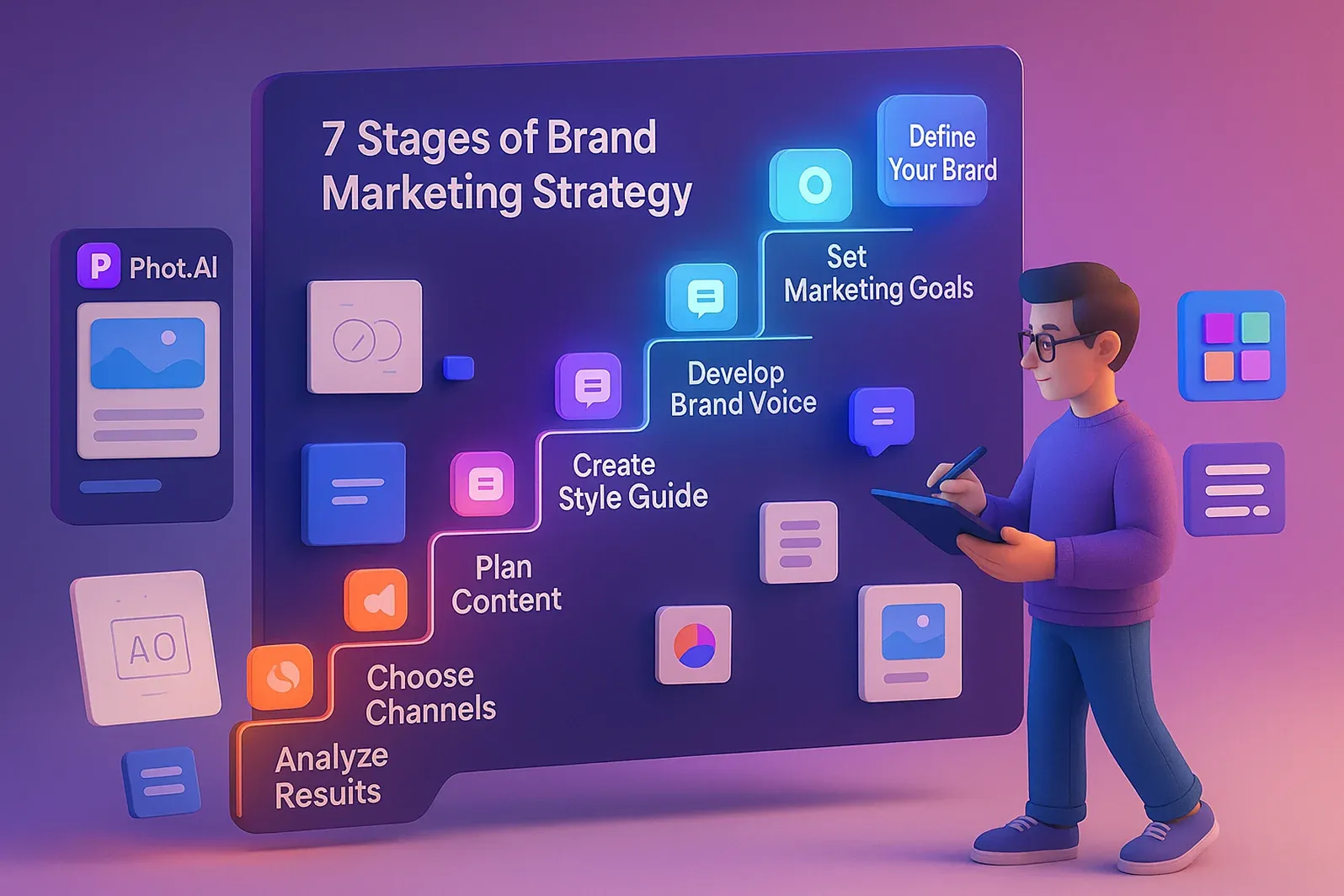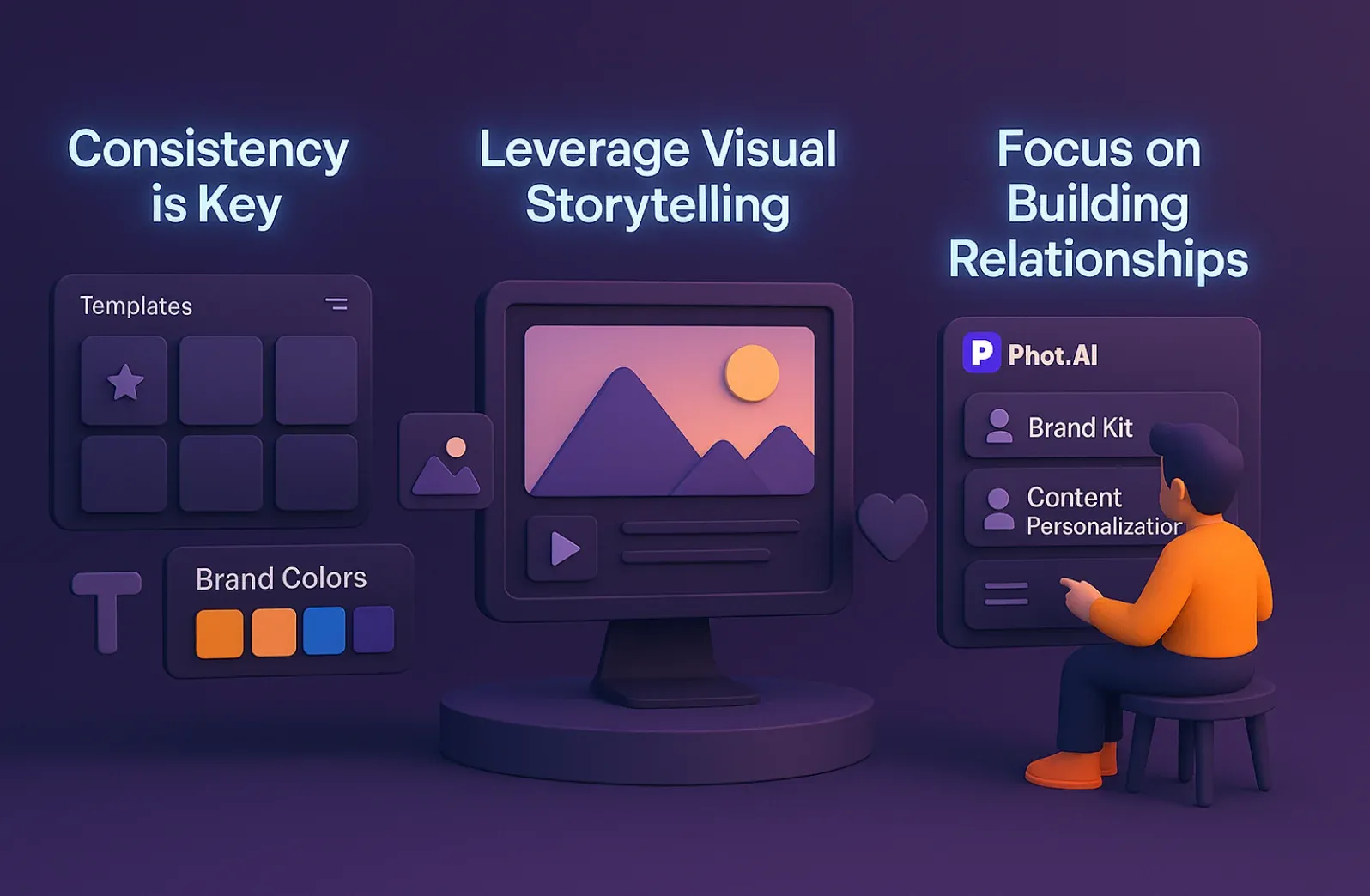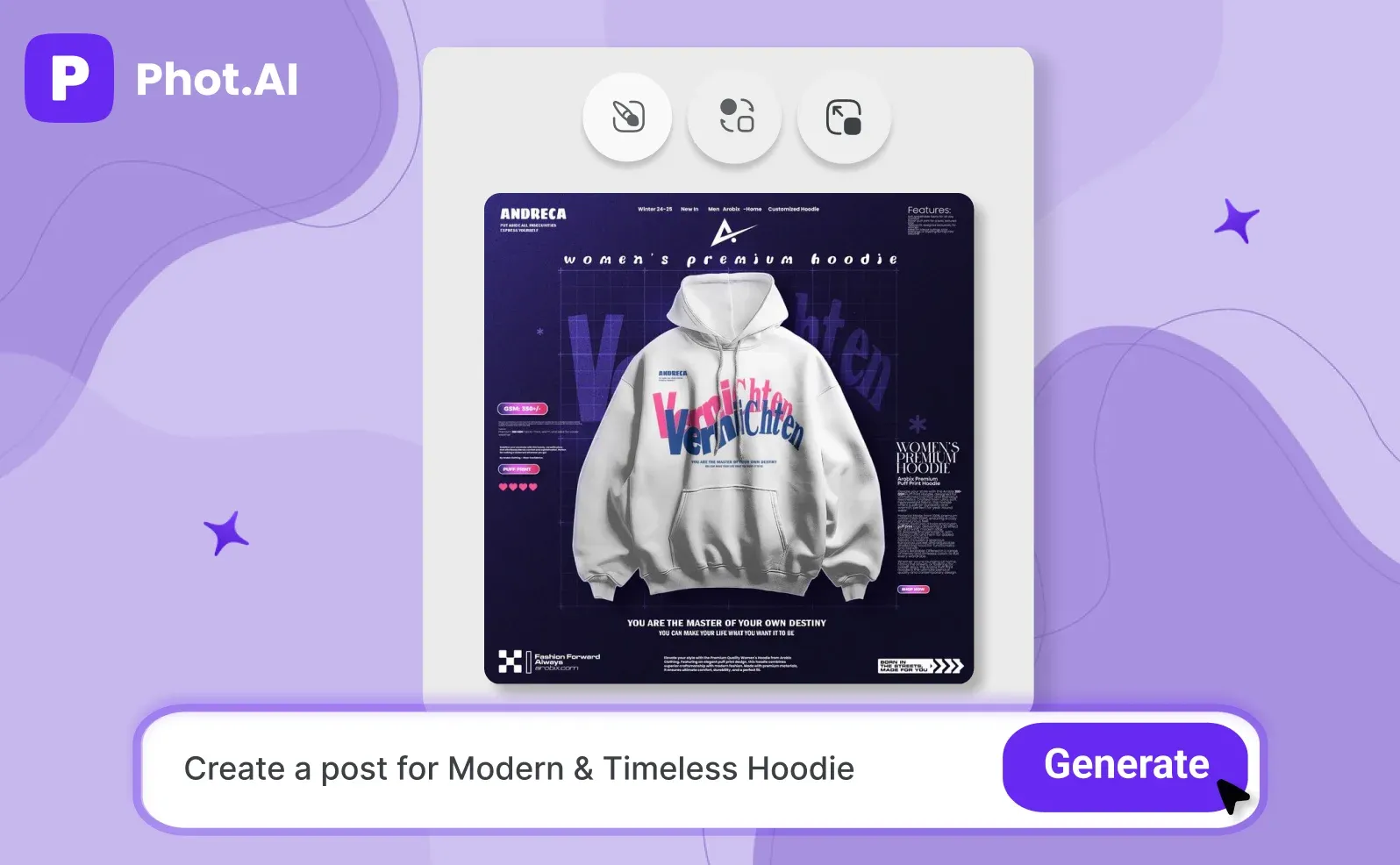Inside the Article
- How to Build a Successful Brand in 2025 with Stunning AI Visuals?
- What is a Brand Strategy?
- Why a Cohesive Brand Strategy Matters
- The Key Elements of a Winning Brand Strategy
- How to Build Your Brand Strategy: A Step-by-Step Guide
- Conclusion
How to Build a Successful Brand in 2025 with Stunning AI Visuals?
A strong brand is more than just a memorable logo or catchy tagline; it's the soul of your business. It’s the gut feeling people have about your products, services, and company. Crafting a brand strategy is the essential process of shaping that perception. Whether you're launching a new venture or revitalizing an established one, a deliberate strategy is what separates businesses that fade into the background from those that build lasting connections.
This guide will guide you through the essential steps of creating a powerful brand strategy. We'll break down the core components, from defining your purpose to creating a compelling visual identity, and show you how tools like Phot.AI can streamline the process, helping you design stunning visuals that bring your brand to life.
What is a Brand Strategy?
A brand strategy is a long-term, detailed plan for how your business will differentiate itself, connect with its target audience, and build a loyal following. It’s the blueprint that dictates how you communicate, what you stand for, and how you want to be perceived in the market. Think of it as the 'why' behind your brand's 'what'. It answers critical questions like:
-
What is our core mission and purpose?
-
Who are we trying to reach?
-
What problems do we solve for our customers?
-
How are we different from our competitors?
-
What personality and values do we want to project?
A well-defined strategy ensures that every interaction a customer has with your brand—from a social media post to a customer service call—is consistent, authentic, and memorable.
Why a Cohesive Brand Strategy Matters

In a crowded marketplace, a strong brand strategy is not a luxury; it’s a necessity for survival and growth. It acts as a compass for your entire organization, providing clarity and direction. Here’s why it’s so critical:
It Helps You Stand Out: Your competitors are all vying for the same customer attention. A clear brand strategy highlights your unique selling propositions (USPs) and gives people compelling reasons to choose you over others.
It Builds Trust and Loyalty: Consistency breeds familiarity, and familiarity builds trust. When customers know what to expect from your brand, they are more likely to engage with you repeatedly. This trust is the foundation of genuine customer loyalty.
It Guides All Your Efforts: From marketing campaigns and product development to hiring decisions, a brand strategy serves as the ultimate reference point. It ensures everyone in your organization is working towards the same goals and communicating with one voice.
It Drives Measurable Growth: A brand that connects emotionally with its audience can command higher price points and foster word-of-mouth marketing. This deep connection directly leads to increased sales and sustainable business growth.
The Key Elements of a Winning Brand Strategy
A successful brand strategy is built on several core elements that work together to create a strong, cohesive identity. Each component plays a vital role in shaping how your brand is perceived.
Brand Purpose
Your purpose is the reason your brand exists beyond making money. It’s your "why." It should articulate the problem you solve for your customers and the positive impact you aim to make. For example, the purpose of Phot.AI is to empower businesses of all sizes to create professional-quality designs effortlessly through AI-powered tools, democratizing great design for everyone. A clear purpose gives your brand meaning and attracts customers who share your vision.
Brand Values
Your values are the guiding principles that influence every decision your business makes. They are the core beliefs that shape your company culture and dictate your actions. These values should be authentic and clearly communicated in your messaging. Whether you prioritize innovation, sustainability, community, or customer-centricity, your values help you connect with an audience that shares them.
Voice and Tone
Your brand voice is the distinct personality your brand uses to communicate with its audience. Is it authoritative and professional? Or is it playful and casual? This voice should remain consistent across all platforms, from your website copy to your social media replies. The tone, however, can adapt to the situation. For instance, your voice might always be helpful, but your tone could be celebratory in one post and empathetic in another.
Visual Identity and Design
Visuals are often the first point of contact a customer has with your brand. Your logo, color palette, typography, and imagery create a recognizable and memorable identity. A strong visual system ensures that your brand looks consistent everywhere, reinforcing recognition. This is where modern tools can make a massive difference. With Phot.AI, you can design professional, visually appealing creatives that perfectly match your brand’s style, ensuring every graphic you produce is on-brand.
Brand Story
Your brand story is the narrative that connects all these elements. It’s how you share your journey, your mission, and your values in a way that resonates emotionally with your audience. A compelling story makes your brand more human and relatable. It can tell the tale of your founding, your commitment to solving a specific customer problem, or your vision for the future.
How to Build Your Brand Strategy: A Step-by-Step Guide

Developing an effective brand strategy is a deliberate process that requires research, reflection, and creativity. Follow these steps to build a solid foundation for your brand.
Identify Your Target Audience
You can't be everything to everyone. The first step is to get crystal clear on who your ideal customers are. Conduct thorough research to understand their:
-
Demographics: Age, gender, location, income, education.
-
Psychographics: Interests, lifestyles, values, and attitudes.
-
Pain Points: What challenges do they face that your product or service can solve?
The more you know about your audience, the better you can tailor your brand strategy to meet their specific needs and desires.
Establish Your Market Position
Next, you need to understand where you fit in the competitive landscape. Analyze your top competitors to see what they do well and where they fall short. This analysis will help you define your unique positioning—the space you want to own in the customer's mind. Your positioning statement should clearly articulate your unique value proposition and what makes you the superior choice.
Craft a Compelling Brand Message
Your brand message is the core communication you want to convey to your audience. It should be clear, concise, and reflective of your brand's purpose and values. This messaging should consistently answer three questions for your customer:
-
What do you offer?
-
How does it solve my problem?
-
Why should I care?
Develop a messaging framework with key talking points to ensure consistency across all marketing materials.
Create a Cohesive Visual Identity
With your message defined, it's time to bring it to life visually. Consistent and professional visuals are non-negotiable for building brand recognition. This is where a tool like Phot.AI becomes invaluable. You can use its AI-powered ad maker and design tools to create:
-
A memorable logo.
-
A defined color palette and font system.
-
Branded templates for social media posts, banners, and presentations.
Phot.AI simplifies the creation of high-quality, on-brand graphics, ensuring your visual identity aligns perfectly with your positioning and message.
Leverage Technology for Brand Marketing

Your brand strategy lives and breathes through your marketing efforts. Use digital channels like social media, email marketing, content marketing, and your website to amplify your brand presence. Create content that provides value to your audience and reinforces your brand story.
With Phot.AI, generating eye-catching visuals for all your digital campaigns is efficient and straightforward, helping you maintain a strong, consistent presence online.
Measure, Refine, and Evolve
A brand strategy is not a "set it and forget it" document. The market changes, customer preferences evolve, and your business will grow. Regularly assess the effectiveness of your branding efforts by tracking key metrics like brand awareness, customer sentiment, and engagement. Use this data to refine your strategy and make adjustments as needed to stay relevant and effective.
Conclusion
Creating a brand strategy is one of the most important investments you can make in your business. By carefully defining your purpose, values, voice, and visuals, you can build a powerful and resilient brand that stands out in a competitive market and forges a genuine bond with your audience. It’s a foundational process that provides clarity, drives loyalty, and fuels growth.
With the help of powerful tools like Phot.AI, designing the impactful branding materials that bring your strategy to life has never been easier. You can focus on the big picture of growing your business while ensuring your visual identity remains strong, consistent, and compelling. Start building your brand strategy today and use Phot.AI to design the stunning visuals that will elevate your business!
Find out from Related Blogs
Find out from
Related Blogs
FAQ
What is a brand strategy and why is it important?
A brand strategy is a long-term plan that defines how your business will stand out, connect with customers, and build loyalty. It’s important because it guides your messaging, visuals, and customer experience, ensuring consistency and trust.
What are the key elements of a strong brand strategy?
Core elements include your brand purpose, values, voice and tone, visual identity, and brand story. Together, these create a cohesive identity that helps you differentiate from competitors and build lasting connections with customers.
How can visuals strengthen my brand identity?
Visuals like your logo, color palette, fonts, and imagery make your brand recognizable and memorable. Consistent, high-quality visuals build trust and help audiences instantly associate your brand with professionalism and credibility.
How do I identify my target audience for branding?
Start by researching demographics (age, gender, income, location) and psychographics (interests, lifestyles, values). Understand their pain points and goals so you can position your brand as the best solution for their needs.